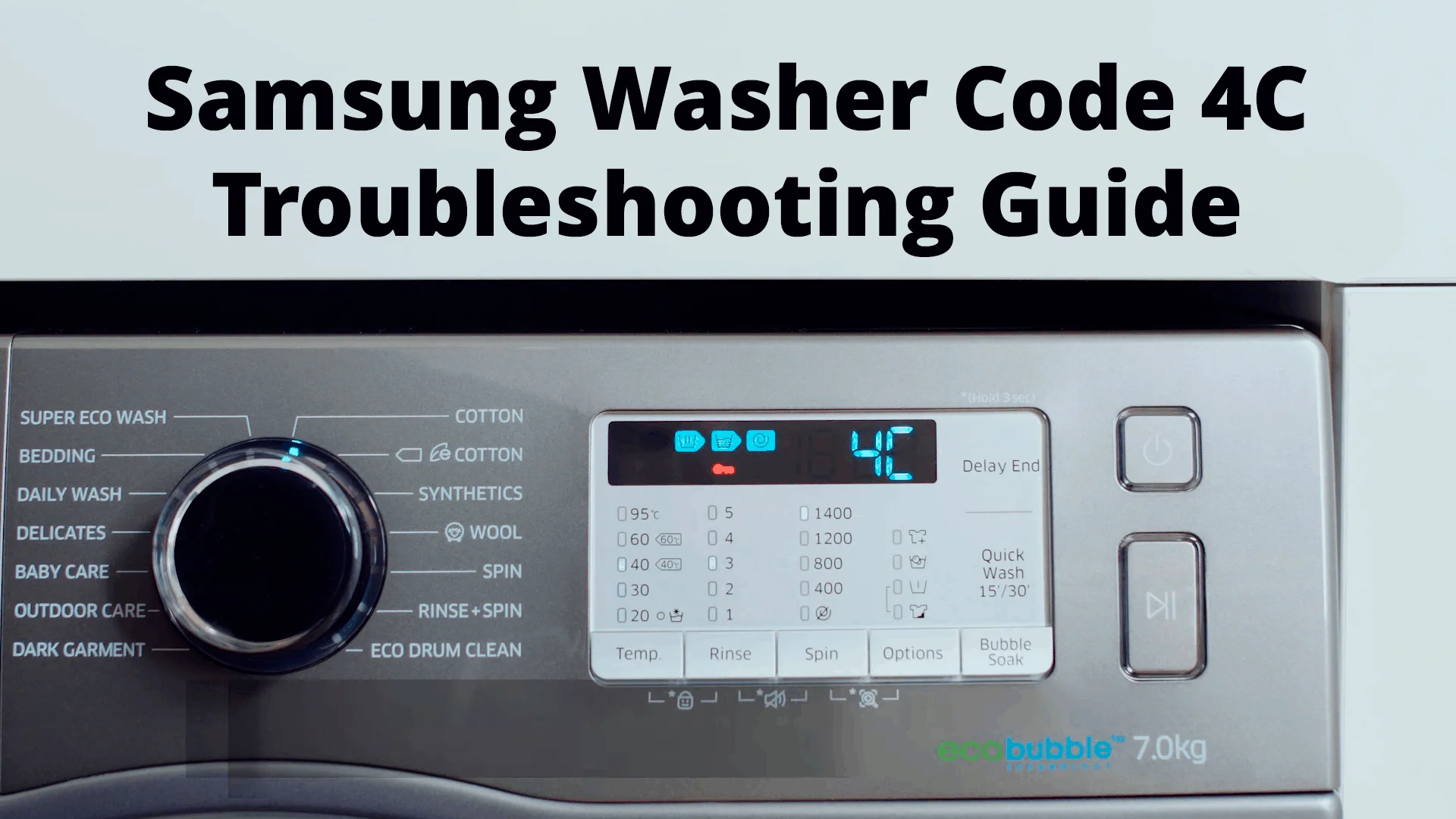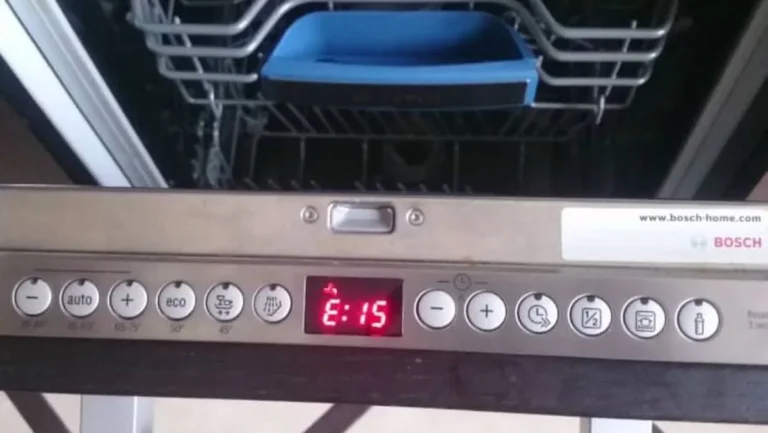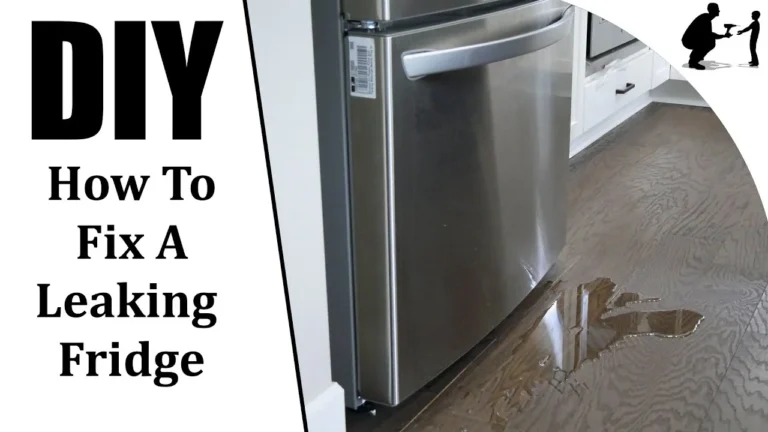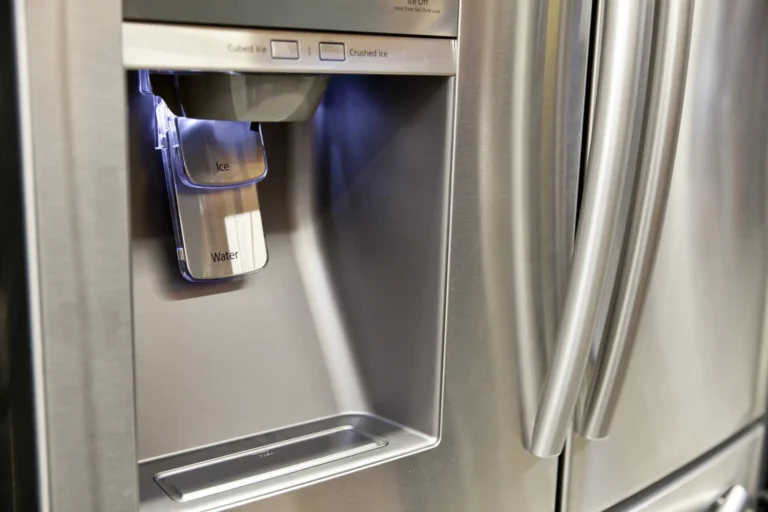Troubleshooting the Infamous Samsung Washer 4C Error Code
The dreaded 4C error code is one of the most common issues that Samsung washer owners face. This cryptic code indicates a problem with the water supply to your washer, which can prevent it from filling properly. Don’t panic though – the 4C error is usually easy to diagnose and fix yourself without calling for costly professional repairs.
What Does the 4C Error Code Mean?
The 4C display on your Samsung washer’s control panel stands for a few different possible issues that all relate to the water supply:
- Water inlet problem – There is an issue with the hot or cold water inlet valves that fill the washer with water. This could indicate a valve is blocked, water pressure is too low, the hoses are kinked, or the water supply is not turned on.
- Water level problem – The washer is not filling to the correct water level for the cycle. This is usually due to a water pressure issue, a clogged filter screen, or a problem with the water level pressure switch.
- Drain issue – If water is draining out while the machine is trying to fill, this backflow can trigger the 4C code. Ensure the drain hose is positioned properly.
- Control board failure – In rare cases, the 4C code may indicate an electronic control board issue. This would require a technician’s diagnosis and replacement of the control board.
So in most cases, the 4C code can be fixed yourself by adjusting or replacing inlet valves, hoses, filters and other water supply components. Let’s look at the steps to troubleshoot and fix this error.
Troubleshooting Steps for 4C Error Code
When you see the 4C code appear, start by running through these troubleshooting checks before you make any repairs:
1. Confirm water supply is turned on – Make sure both hot and cold water taps feeding the washer are fully turned on. The valves should be open all the way.
2. Check for kinked or blocked inlet hoses – Examine the flexible rubber hoses connecting the water supply to the back of the washer. If pinched or bent, straighten them out. Disconnect and inspect hoses for trapped debris and clean out if needed.
3. Test water pressure – Water pressure under 30 PSI may cause 4C errors. Test pressure using a gauge on both hot and cold lines and compare to your washer manual specs. Increase home water pressure if too low.
4. Clean the water inlet filters – Clogged mesh filters can restrict proper water flow. Unscrew and clean debris from the filter screens on the hot and cold water valves.
5. Confirm drain hose routing – Make sure the drain hose is mounted correctly and not allowing siphoning back into the washer tub. Re-position if needed.
6. Test inlet valves – Valves that fail to open fully or close completely must be replaced. Check for power on the valves and test manually.
7. Reset control board – Unplug the washer and wait 60 seconds to reset the computer, then check if 4C code persists. This may clear any false error codes.
These basic troubleshooting steps should reveal the cause of most 4C issues. Specifically, inspecting the water supply setup will usually identify the problem. Let’s look closer at some of these fixes.
Checking the Water Inlet Valves
The inlet valves are electrically-controlled gateways that allow water to enter the washer tub. There is one dual valve for both hot and cold supply lines. When powered on, they open to begin the fill cycle. If either side fails, the 4C code can display.
Check the valves by removing the access panel and locating the valve unit mounted to the back of the washer. Confirm both halves of the valve open and close fully when operated manually. Watch for mineral deposits that may obstruct valve movement. If the valves appear functional, continue to the next steps. If any valve is stuck, leaking or unresponsive, replace the entire inlet valve assembly.
Inspecting Inlet Hoses
Rubber hoses provide the water supply connection between household pipes and washer valves. Loose, pinched or blocked hoses can trigger 4C errors.
Disconnect the hoses from the back of the washer by unscrewing them from the valve. Visually inspect for cracked or bulging sections. Hoses over 5 years old should be replaced as a precaution.
Check inside hoses for mineral deposits or debris that could clog water flow. A steady stream of water should flow through each disconnected hose when turned on. Use a wire cleaner tool to clear any obstructions. Also straighten any kinked or bent areas of the hoses.
Reconnect the hoses securely and make sure rubber washers are in place for leak protection. Check for any drips and tighten fittings if needed. Turn on water and verify 4C error is cleared.
Testing Water Pressure
Low water pressure below 30 PSI can prevent the valves from delivering enough water volume to fill the tub. Pressure issues may be from the home plumbing system or inadequate supply flow from the building.
Attach a water pressure gauge to exterior faucets and take measurements on both cold and hot water lines. Compare your results to the minimum pressures listed in the washer manual (usually 30-120 PSI).
If pressure is too low, install a booster pump on the washer water lines if allowed. For whole home pressure problems, you’ll need a professional plumbing assessment.
Adjusting Drain Hose
The drain hose expels used water from the washer tub during operation. If drainage backflows into the tub, the 4C error can display from inaccurate water level sensing.
Check that the drain hose is inserted into the drain pipe or laundry sink at least 4-6 inches. Binding or kinking the hose can also cause backflow. Avoid sharp bends and keep the hose as straight as possible.
Use the included plastic elbow bracket to maintain hose elevation higher than the fill level. Fasten tightly in place. Inspect all connections and fittings for leaks and secure if found. Proper drain hose positioning should prevent siphoning water.
Resetting Control Board
If no defects are found with the water system, the last resort is resetting the computerized control board to factory defaults. This erases any erroneous error codes that may be stored and could clear a false 4C code.
Unplug the washer from power for 1 minute minimum. After a full system reset, plug it back in and attempt a normal wash cycle. If the 4C error persists, then an electronic control board failure is likely and professional service will be required.
When to Call a Repair Technician
While the 4C code is one of the simpler DIY troubleshooting fixes, not all cases can be resolved without help. Here are some instances when it’s best to have a trained technician evaluate your Samsung washer:
- You’ve made all feasible repairs but the 4C error persists. At this point, the problem lies with internal components or electronics.
- Significant leaks, overflow or large amounts of water discharged. Safety hazards should be addressed immediately by a pro.
- Suspected failure of the electronic control board. This complex part is best diagnosed and replaced by someone familiar with appliance electronics and circuitry.
- No power at all to the washer or electrical burning smell. Avoid a hazardous shock and call an appliance repair company immediately.
- Not comfortable with any complex repair procedures or plumbing adjustments. Better to have a guaranteed fix than risk further damage.
While calling a service company does mean paying the standard trip and labor fees, sometimes it saves you from wasting time or creating an even bigger issue. Professional repair technicians have specialized tools and testing capabilities to properly extract stored error codes, diagnose internal failures, and source replacement parts for your exact Samsung washer model.
Preventing Future 4C Errors
Once you’ve successfully cleared the current 4C error, take a few actions to prevent this annoying code from popping up again:
- Periodically inspect and clean inlet hoses to remove mineral build-up. Replace older rubber hoses.
- Install mesh washers at hose connections to filter debris from entering valves.
- Avoid overtightening fittings or harsh kinking of water hoses.
- Verify sufficient water pressure and volume during peak usage times.
- Level the washer properly to prevent drain backflows.
- Clean the valve inlet screens every 3-6 months.
- Verify home plumbing and leaks are not affecting washer supply.
- Don’t overload the washer drum which could throw off water level sensors.
With some preventive care steps and awareness of the most common 4C causes, you can hopefully avoid this frustrating error code in the future. Just be sure to run the proper diagnosis when it does happen to get your Samsung washer functioning optimally again.
Properly Diagnosing 4C Codes Caused by Drain Issues
While inlet valves and water supply typically cause 4C error codes, drain problems can also be the culprit by allowing siphoned water to trickle back into the wash tub. If you’ve confirmed the water supply is functioning properly, look into these steps to diagnose drain-related 4C errors:
Check Drain Hose Height and Position
The drain hose that came with your Samsung washer is specially designed to prevent backflow issues. Make sure it is installed correctly by checking:
- The hose is hanging high enough to stay above the water line of the wash tub. It should extend higher than the top of the washer cabinet.
- The hose is inserted at least 4-6 inches into the drain pipe or standpipe. Push the hose in as far as possible for a tight fit.
- The hose is free of kinks and sharp bends, especially at connections.
- The plastic elbow bracket keeps the hose propped up above the fill level.
- Point of drain contact allows complete water drainage without blockage. Avoid resting the hose on top of drain openings.
- The hook that anchors the drain hose is firmly attached to the laundry tub or other secure point.
Repositioning the drain setup to meet these requirements can often resolve a 4C code triggered by backflow.
Check Plumbing for Clogs or Leaks
If the drain system itself is blocked, water will back up instead of safely draining. A clogged drain line, standpipe, or trap can all prevent proper drainage. Signs of deeper clogs include slow sink and tub drainage.
Inspect each connection point and drain segment for obstructions. Dish soap can help lubricate piping to unclog debris. A drain snake can forcibly clear out stubborn clogs.
Leaky plumbing joints or defects allow water to seep out and reduce drainage volume. Have a plumber inspect under sinks and tubs for clues. Listen for running water when fixtures are off. Repair leaks to restore full drain capacity.
Test Drain Pump Operation
Samsung washers utilize a drain pump to eject water from the tub. Failure here allows water to sit in the basin rather than properly evacuating. Test functionality by:
- Removing the drain pump filter and cleaning out any debris clogging the impeller or hose.
- Checking if the pump makes humming noises when active. No sound indicates failure.
- Verifying unobstructed rotation of the pump impeller. Spin manually to feel for scraping.
- Monitoring current draw and voltage on pump motor wiring.
- Looking for leaks, cracks or loose connections on pump housing.
Replace the entire drain pump assembly if defective. Match model numbers exactly. This should restore full drainage power and eliminate 4C codes.
Clear Error Codes and Monitor Cycles
Finally, clear any erroneous error codes from the control board and re-test washer cycles:
- Unplug the washer and disconnect hoses to drain out all water.
- Leave unplugged for 2 minutes minimum to reset electronic controls.
- Reconnect everything, including the drain setup. Verify drain hose positioning is correct.
- Run a drain + spin cycle and confirm complete water removal within 2 minutes.
- Follow up with a full normal cycle while monitoring for 4C errors.
If the code still appears during a cycle, the drain system requires further inspection by a technician. But if cycles now complete normally without 4C errors, the fix is complete.
Why Water Pressure Below 30 PSI Causes 4C Codes
Samsung specifies that water pressure feeding your washer should measure between 30-120 PSI. Drop below 30 minimum PSI, and you may encounter 4C errors even with fully functional inlet valves. Here’s why low water pressure triggers this code:
Inadequate Fill Volume – Less water pressure directly translates to less water volume being delivered through the supply hoses. Even with valves fully open, lower pressure restricts the gallons per minute reaching the tub. If volume is too low, tub level sensors don’t detect enough depth.
Solenoid Issues – The valve solenoids that control hot/cold inlet flow require a minimum pressure differential to function properly. Below 30 PSI, these solenoids and sensors malfunction and fail to open the valves fully.
Control Errors – With lower pressure, wash cycles take longer to satisfy fill volume needs. If the control board doesn’t detect fill completion within expected time frames, a 4C code is triggered.
Nozzle Pressure Errors – Some washers calibrate fill based on triggering water nozzle pressure switches. Low pressure can’t activate these properly, again leading to faulty cycle sensing.
Weak Agitation/Circulation – Agitators and wash plates provide cleaning action via water circulation. Weak fill pressure reduces this circulation power and alters water level detection.
While the valves themselves don’t require high pressure, all these secondary effects of low pressure cause the 4C code. Boosting home water pressure resolves this, along with checking for any pressure-reducing issues with the setup:
- Partially closed supply valves – Open fully
- Clogged water filters – Change cartridges
- Undersized supply lines – Use wider diameter pipes
- Failing pressure regulator – Check settings/replace
- Numerous simultaneous water demands – Stagger washer use
Maintaining adequate pressure also prevents other performance issues like leaking valves, long cycle times, and poor rinsing.
Adjusting Water Supply Lines and Hoses
The flexible hoses providing hot and cold water supply to the washer can become defective over time and cause 4C errors. Here are tips on maintaining and replacing these crucial components:
Inspect Hoses Yearly – At least once a year, examine washer hoses for cracks, bulges or leaks. Squeeze along the length to feel for internal tube weaknesses. Replace any hose showing deterioration. Mark hose install dates with tape.
Replace Hoses Over 5 Years Old – Prevent hose failures by proactively swapping in new inlet hoses every 5-7 years. Older hoses become porous and prone to bursting. Write the install date clearly on new hoses.
Use Stainless Steel Hoses – For superior pressure resistance and durability, upgrade to braided stainless steel inlet hoses instead of rubber. Properly insulated steel won’t bulge or kink.
Install Mesh Washers – Fit mesh washers at both ends of hoses to filter out minerals and debris that can collect in the valve. Avoid sediment buildup.
Check Lengths – Inlet hoses should be long enough to conveniently connect water lines but not excessive to avoid pressure losses from too much coiled hose. 6-8 feet is ideal.
No Sharp Bends – Arrange hoses neatly to prevent tight bends that can kink internally and restrict water flow.
Hand Tighten Fittings – Snugly hand tighten all hose fittings but avoid power tools that over-tighten. Overtightening causes leaks. Go gently until secure.
Consider Flood Devices – For additional leak protection, add automatic water shut-off valves that detect bursts and flooding. These provide peace of mind if a hose ruptures.
With high-quality hoses clear of obstructions, and leak protection added, supply lines will perform reliably for years and avoid 4C issues. Replace suspect hoses at the first sign of problems.
When to Replace Faulty Water Inlet Valves
The dual inlet valve is the electronically controlled gateway that allows water to enter the washer tub. If either the hot or cold valve side malfunctions, it displays the 4C error code. Here are signs it’s time to replace a failing Samsung inlet valve:
- Leaking from valve fittings – Water droplets at the valve fittings indicate worn seals/gaskets. Some moisture may occur from condensation however.
- Valve delaying before opening – Extended pause before water starts flowing points to valve wear or sediment.
- Valve not fully opening – Reduced flow even with unclogged hoses signals a bad solenoid or actuator.
- Dripping valve when off – Trickling water through a valve in the closed position means it’s unable to seal completely.
- Cracked or damaged housing – External leaks or splintered plastic casing require valve replacement.
- Sediment buildup in valve – White/yellow mineral deposits negatively affect water flow.
- No power to valve – No hot/cold fill means electrical issue or coil failure.
- Washer not filling at all – Points to complete valve failure.
- 4C code persists after standard fixes – Indicates definitive valve malfunction.
Always turn off water supply and drain any residual water before removing inlet valves. Use a multi-meter to check for proper electric resistance values. Upon valve removal, inspect the internal filter screens and clean or replace if needed.
Match the new Samsung inlet valve exactly based on your model to ensure fit and specifications. Upon installation, check for leaks and verify unrestricted water flow before testing a full wash cycle. The replacement valve should eliminate the 4C code error for years to come.







